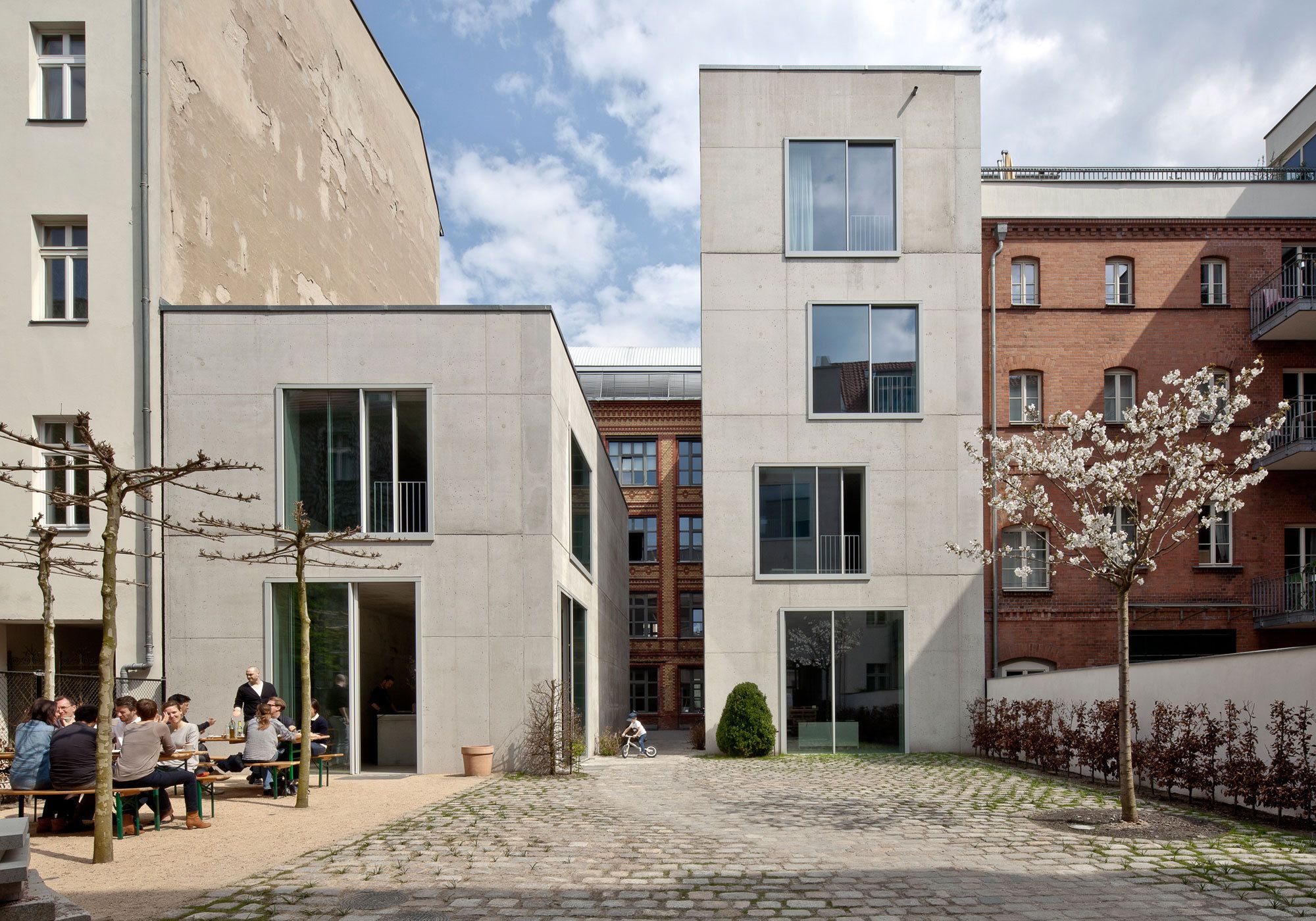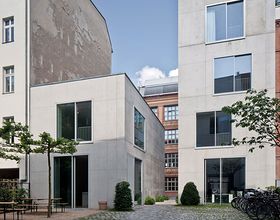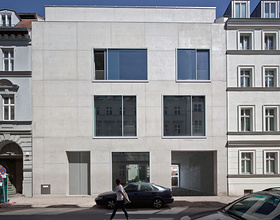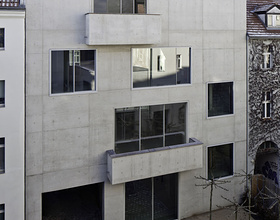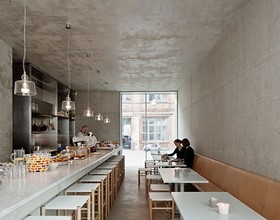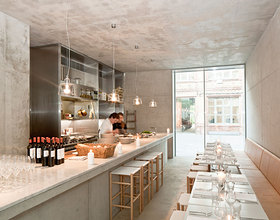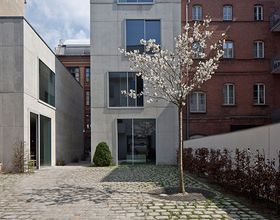JOACHIMSTRASSE
-
Situated in the centre of Berlin near Hackesche Höfe, this project occupies a deep plot in an urban block that was heavily damaged during World War II. The maintenance of the historic building’s fabric was neglected over decades. The urban block was fragmented and occupied by a mix of historic and more recent prefabricated concrete buildings. Redevelopment started intermittently in the 1980s with demolitions, new buildings and the reconstruction of shortcuts and alleyways. Since the beginning of the 1990s many buildings have been renovated, followed by the refurbishment of the streetscape and the remodelling of squares and open green spaces.
The new interventions complement the existing brick building. The residential front building closes the street façade and its overall proportions respond to the neighbouring structures. Two cubic volumes of differing heights have been inserted in the middle of the plot. The view of the original building behind is preserved through a gap between these volumes and over the lower of the two, which strike a balance between re-establishing the typical pre-war courtyard structure, and a post-war configuration of solitary buildings. The new buildings include an extension at the back of the existing offices. The proportions of the new constructions and the height of their eaves are adapted in accordance with their immediate neighbours, while each volume remains distinct through its materiality and fenestration.
The ground floor of the front building is used as an exhibition space and the basement for storage and building services. Of the two middle volumes, the two-storey structure serves as a canteen and links to the existing office building underground, while the taller four-storey volume docks directly into the existing office building, providing a generous new space on each floor.
There are three courtyards, the first of which is located between the front and the two middle buildings, and is the most public. The level of seclusion increases in the second courtyard between the middle buildings and the original structure. The third courtyard between the original building and the furthest extension is a garden. The cobblestone pavement and trees contrast with the rigorous form of the buildings. The exterior walls of the new buildings are made of fulldepth insulating concrete, exposed both inside and outside. All walls support the large floor spans, avoiding the need for additional columns or supports. Screed is used for the flooring, while the doors, light partition walls and installations are crafted from varnished wood or marble in contrast to the concrete.
Photo credits: Ute Zscharnt, Simon Menges.
1870 Projects

